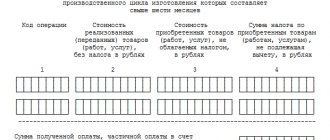Why calculate interest on a loan? A responsible borrower should calculate the interest on his loans in advance
How is interest calculated on a loan? The procedure for calculating interest is determined by the Civil Code
How to calculate interest using a calculator When calculating using an online calculator, it is enough to indicate the basic terms of the loan in the service
Calculation of simple interest With a simple scheme, interest is calculated for the entire period at a constant rate
Calculation of compound interest With a complex scheme, the amount of interest gradually increases
Calculation of interest on late payments A separate formula is used to calculate penalties
Calculation of interest in case of early repayment In case of early repayment, interest is recalculated taking into account the date of payment
Questions and answers Answers to popular questions about interest on loans
The ability to calculate interest on a loan is an important element of financial literacy. It helps to determine, even before concluding an agreement, whether you have enough money to repay the loan. And after receiving the money, calculate how much you will have to pay. You can calculate interest using several formulas that are given in this article.
According to what scheme can interest be calculated on a loan?
The main document establishing the procedure for calculating and paying interest is the loan agreement. It is there that both parties reflect the terms on which one party lends the other a certain amount of money.
In widespread practice, several interest calculation schemes are used. Let's take a closer look at each of them:
- The loan agreement assumes that the money will be repaid in installments rather than in a lump sum. Then a scheme is used in which first the interest on the loan is calculated relative to the full amount of the debt, and then payments are established on the balance. This scheme has its advantages, since it allows you to reduce the amount of interest if you manage to pay off part of the debt.
- A method in which interest is collected based on the full amount of the debt, regardless of how much the borrower has already repaid. In this case, provided that there are no delays in payments, the borrower and lender immediately know the exact amount of the overpayment on the microloan.
- There may also be an option when the loan agreement does not specify the interest rate. This does not mean that the borrower will not pay interest to the lender. This option is only possible when concluding a gratuitous loan agreement, which is a completely different category of financial transactions. The interest rate, in the case where it is not specified in the document, will be calculated based on the refinancing rate of the Bank of Russia.
Each option has a number of advantages and disadvantages. Methods for calculating interest on a loan must be selected individually in each individual case.
For each accrual scheme, special calculations are made. Nowadays there are convenient calculators freely available. They will automatically calculate the amount you will overpay when taking out a loan. Such tools can be very helpful for those people who are not very versed in credit calculations. It is enough to enter information about the loan into the appropriate fields of the calculator, and in just a few clicks the necessary calculations will be made.
Example 1
Let Ivanov take out a loan of 10,000 rubles from an MFO for 20 days at a rate of 1.5% per day in 2021.
First, let's calculate the RATE indicator: 1.5% multiplied by 365, it turns out 547.5% per annum. Next, we substitute the available data into the formula:
DEBT = (10,000 * (547.5/100)) / 365 * 20 + 10,000 = 13,000 rubles.
As we noted above, theoretically, the simple interest formula is also applicable to conventional loans - at an annual interest rate. Consider the following example.
How to determine the first and last day for which interest should be calculated?
Calculating the amount of interest under a loan agreement has many features. In some cases, it is not always clear from what day to start calculating accruals.
If the contract is drawn up correctly, it will reflect the exact dates for which payments should be made. Unfortunately, in practice this does not always happen. Most concluded agreements for the transfer of borrowed money for use by another person reflect information about the period for which the loan was issued.
According to current legislation, the date of conclusion of the loan agreement is the day when one party transferred funds to the other party. It is important to consider that interest accrual should begin from the next calendar day, and not from the date on which the document came into force.
The last day for which interest accrues is usually determined as the date on which the full amount of the debt is repaid. The wording of the laws in force today is not precise enough, so there is disagreement as to whether interest on the last day should be paid or not. The practice of calculating interest on a loan tends to include the last day in those periods that are subject to interest.
Minimum and maximum interest in the case of a loan between individuals and legal entities
The principle of freedom of contract, coupled with the norms of Art. 809 of the Civil Code of the Russian Federation assumes that the parties are free to establish the amount of interest charged for using the loan amount.
The Civil Code of the Russian Federation does not establish a minimum interest rate on loans between legal entities and individuals. Moreover, the loan can be generally interest-free, regardless of the subject composition.
A loan agreement between legal entities without interest from 01/01/2017 does not apply to controlled transactions, even if it was concluded between interdependent persons. The organization that provided such a loan will not have to pay additional income tax (letter of the Ministry of Finance of the Russian Federation dated March 23, 2017 No. 03-03-RZ/16846).
The Civil Code of the Russian Federation also does not contain maximum interest values under the Law. However, for consumer lending, the Central Bank of the Russian Federation publishes quarterly information on the maximum interest rate, which is mandatory for organizations providing consumer loans. Methods for establishing interest rates for loans to consumers are limited by Art. 9 of the Law “On Consumer Credit (Loan)” dated December 21, 2013 No. 353-FZ (in contrast to the general norm of the Civil Code of the Russian Federation, this article requires that variable interest be linked to a value published in the media and independent of the lender and its affiliates).
Collection of interest under a loan agreement
The borrower benefits from transferring his funds for use to another person or legal entity. Most people value their reputation, therefore, if they have debt, they try to pay the principal amount of the debt on time, as well as all interest charges on it. However, sometimes the borrower avoids fulfilling the obligations that are specified in the loan agreement or receipt. There are several options to solve this problem:
- Resolving issues at the pre-trial stage. This tactic has a number of advantages, since there is no need to spend money, time and effort on filing a lawsuit. However, such a solution is not always possible, since unscrupulous borrowers will do their best to avoid paying the debt and interest.
- Going to court. Litigation, of course, will negatively affect the borrower's credit history. Banks and microfinance organizations will avoid cooperation with such a client, which means that the likelihood of loan refusal will be much higher. Every lawsuit comes with many costs. If the applicant is right and wins the case, then the borrower will have to pay all legal costs. In some cases, when the borrower is able to prove (documented) that he was unable to repay the loan on time, a decision may be made to reduce penalties for late payment. This practice is quite common, so the creditor cannot always be sure that he will receive compensation in full.
- Resolving the issue through a collection service. Many companies and microfinance organizations for which issuing loans is their main activity prefer not to deal with the court and resell debts to a collection service. Unfortunately, debt collectors can use rather radical methods of debt collection. They regularly visit the debtor at home and at work, thereby undermining his authority.
Important! A peaceful resolution of the issue should always be a priority as it will be most beneficial for both parties.
Compound interest
The following formula is applied here (let’s agree that for a bank loan - in percent per annum):
DEBT = LOAN * (1 + (RATE / 100) ) ^ YEARS, where:
- DEBT, LOAN, RATE - the same as in the previous formula;
- YEARS—the number of years the loan has been used.
This is the simplest formula. In practice, it may look much more complicated - for example, if you take into account how many times during the year the rate is recalculated in accordance with the loan agreement.
Calculation of interest on a loan in case of delay in payments
Sometimes the borrower’s financial situation deteriorates so much that he is unable to repay the existing loan or microcredit. It is important to know how interest is calculated in such a situation.
Most often, the procedure for interaction between the parties in the event of a delay in payment or interest payments should be reflected in the concluded agreement. There may be several options for the development of events:
- The lender refuses to extend the loan term to its borrower. In this case, interest is accrued on the loan according to the terms reflected in the agreement. During the period of delay in debt payment, a penalty is accrued, which is much higher than the interest rate. The amount of penalties must be indicated in the receipt, so both parties know these conditions even at the time of signing the contract. This outcome, of course, is beneficial to the creditor, since if there is a long delay, the amount of the fine may even exceed the amount of the principal debt. If the borrower does not pay the debt and penalties, then the individual or legal entity that issued the loan has the right to go to court. However, lenders in this case must take into account the fact that the judge may take into account evidence of the borrower's dire situation and exempt him from paying part of the fine. That is why many microfinance organizations prefer to turn to collection offices for help.
- The party that issued the microloan agrees to extend the loan term. In this case, interest on the loan is calculated according to the scheme that was used previously and is specified in the loan agreement. This outcome is naturally more advantageous for the borrower. He will not have to pay a fine, and his credit history will not be spoiled, which in the future may affect the issuance of another loan.
If problems arise with timely repayment of the loan, the borrower in any case should try to resolve the issue peacefully. This will reduce the overpayment on the loan and will not affect your credit history.
If the loan was taken not from an individual, but from a company providing lending services, then you should urgently contact the organization’s employees, inform them of your situation and ask for an extension of the loan.
Important! MFOs often meet their clients halfway and extend the loan. If the borrower contacts the company more than once and has a positive credit history, he has a better chance of prolonging the contract.
Main types
If the lender is an organization, the following types of postings are distinguished:
Dear readers! The article talks about typical ways to resolve legal issues, but each case is individual. If you want to find out how to solve your particular problem , contact a consultant:
8
APPLICATIONS AND CALLS ARE ACCEPTED 24/7 and 7 days a week.
It's fast and FREE !
- transfer of monetary resources to the person who received the borrowed funds;
- interest rate accrual;
- return of borrowed funds.
When an organization becomes a borrower:
- obtaining borrowed funds;
- accrual of interest amounts;
- repayment of a credit.
Loans also have their own classification:
- interest - when the person who took out the loan undertakes to repay the money at an interest rate;
- targeted – the agreement clearly states for what purpose the loan was taken. The investor can demand money back if he finds out that it is being used for other purposes;
- interest-free – when the lender does not require payment of remuneration for using the loan;
- commodity – when the borrower receives some type of goods;
- state - the state takes the debt.
Each type has its own type of loan agreement.
Interest-free
Interest-free loans do not bring economic benefits and are therefore not considered a financial investment. To account for an interest-free loan, account 76-3 “Calculations for due dividends and other income” is used.
The amount of natural borrowed resources is determined by the book value of assets that the enterprise has already transferred or will transfer. If the borrower is an individual, then the interest-free loan is accounted for as receivables in account 76-3
Expert commentary
In most MFCs and MCCs, the average loan rate is about 1% per day. This norm is established for them by the Bank of Russia. This seems like a very large fee. On the other hand, most loans are small amounts for a short period.
Overpayment on a loan of 10,000 rubles for a period of 7 days will average 1,400 rubles. An acceptable option if you need money today. For example, you need to make a mandatory payment on a loan or you don’t want to miss an advantageous purchase offer.
In addition to the interest rate, the amount of overpayment is affected by insurance and commissions. The “right” companies don’t have them. However, to avoid surprises, read the contract carefully.
We do not recommend contacting MFCs and MCCs that issue loans at interest rates that are in the red zone. Even a small delay can result in large losses.
Written form of the contract: is it possible to limit it to a receipt?
As we can see, in most cases, loan agreements in which a legal entity and an individual entrepreneur participate are concluded in writing. At the same time, violation of the rule on the written form of an agreement will not make it invalid or unconcluded (for more details, see “When an agreement is considered concluded: correspondence and an invoice by e-mail, analogues of an electronic signature, drawing up a letter with an agreement”). However, in the event of a dispute, the parties will not be able to refer to witness testimony to confirm both the very fact of concluding a loan agreement and its terms (clause 1 of article 160 of the Civil Code of the Russian Federation, clause 1 of section I of the Review of judicial practice of the Supreme Court of the Russian Federation No. 1 (2016 ), approved by the Presidium of the RF Armed Forces on April 13, 2016).
What does the term “written form” mean? Is it necessary to have a single document called an “agreement” signed by both parties? It follows from paragraph 2 of Article 808 of the Civil Code of the Russian Federation that the written form of the loan agreement will be observed even if there is a receipt from the borrower or another document certifying the transfer by the lender of a certain amount of money to the borrower. At the same time, this receipt (other document) must confirm both the very fact of concluding the loan agreement and its terms - this directly follows from the wording of the norm in question. This means that the text of the receipt (other document) must contain an indication that the money was received on loan, that is, the borrower undertakes to return it to the lender within the prescribed period or at the request of the lender (determination of the Supreme Arbitration Court of the Russian Federation dated March 31, 2011 No. VAS-1827/11 on case No. A28-3935/2010-102/25). Also, the receipt (other document) must indicate the loan amount and make a note that the borrower has received this amount. If the listed provisions are not stated in the receipt (other document), then it will be almost impossible to prove that the money was transferred and transferred specifically under the loan agreement. This conclusion is confirmed by extensive judicial practice.
Exchange legally significant “primary data” with counterparties via the Internet. Free inbox.
For example, courts do not recognize the debtor’s accounting documents (including transcripts of the relevant balance sheet lines) as evidence of the conclusion of a loan agreement. Justification - such documents do not contain an indication of the borrowed nature of the relationship between specific persons (resolutions of the Federal Antimonopoly Service of the North-Western District dated 10.21.09 in case No. A13-1829/2009 and the FAS Central District dated 02.12.13 in case No. A35-11432/2010) . You also cannot use a reconciliation report. According to the courts, this document does not confirm the existence of a loan relationship between the parties, despite the fact that it contains their signatures (resolution of the Federal Antimonopoly Service of the Moscow District dated December 28, 2009 No. KG-A40/13537-09 in case No. A40-43264/09-47 -267, ruling of the Supreme Arbitration Court of the Russian Federation dated 02.02.12 No. VAS-214/12 in case No. A41-45367/10).
But even with the correct execution of the receipt (other document), there may still be problems with confirming the loan. For example, this can happen if the loan amount is large and there is no information confirming that the lender actually has this amount (for example, information that he withdrew funds from a bank account or indicated the loan amount in a tax return). In such a situation, even a correctly drawn up receipt will not be one hundred percent confirmation of the conclusion of a loan agreement (decision of the Supreme Court of the Russian Federation dated October 2, 2009 No. 50-B09-7). At the same time, we note that it is the lender who is obliged to prove the possibility of issuing a loan in such an amount, otherwise he will not be able to get his money back (resolution of the Arbitration Court of the Far Eastern District dated 06/09/18 No. F03-2065/2018 in case No. A51-3905/2017). We also note that there are no criteria for the “largeness” of the loan amount. Therefore, the court decides this issue each time taking into account the specific circumstances of the case. In particular, in the above court decisions, loans of 10 million rubles and 700 thousand rubles were recognized as large.
As we can see, to confirm the borrowing relationship, it is quite dangerous not to conclude a loan agreement in the form of a single document signed by the parties, but to limit it to only a receipt. Moreover, the risk arises not only from the lender, who may encounter difficulties in repaying the loan amount. Problems may also arise for the borrower. As is known, in tax accounting, amounts received under a loan agreement are not included in income (subclause 10, clause 1, article 251 of the Tax Code of the Russian Federation). However, if the court, when considering the dispute that has arisen, indicates that there are no grounds for recognizing the relationship between the parties as borrowed, then the received loan amount will have to be included in income.
Check the counterparty for signs of a shell company









